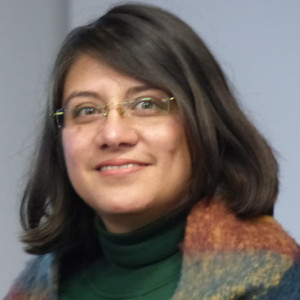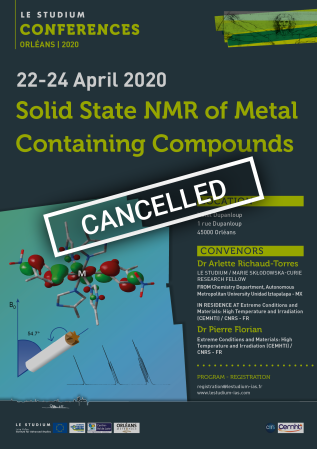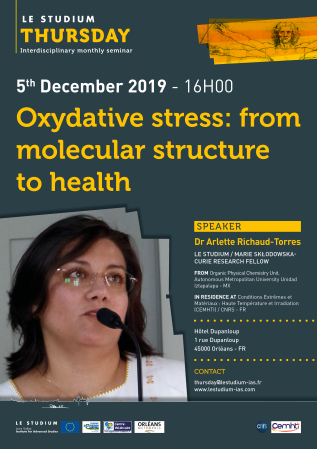Dr Arlette Richaud-Torres

2nd period : September, 2020 to December, 2020 : LE STUDIUM Guest Research Fellow
From
Organic Physical Chemistry Unit, Autonomous Metropolitan University Unidad Iztapalapa - MX
In residence at
Extreme Conditions and Materials: High Temperature and Irradiation (CEMHTI) / CNRS - FR
Host scientist
Dr Pierre Florian
PROJECT
Coordination compounds as antioxidants: activity evaluation by combining first-principle calculations and solid-state NMR
We propose to jointly use Solid State Nuclear Magnetic Resonance Spectroscopy (NMR) and first principle calculations to access the reactivity indices of transition metal imidazolates designed for antioxidant activity. We are interested in the identification of the desired relevant biological interactions (i.e. hydrogen bonds and p-p interactions) that model compounds shall perform to be promising antioxidant drugs. For this work we will adopt a combined experimental/theoretical approach, performing solid state NMR experiments as well as calculation of reactivity indices from first-principle calculations. We aim at deriving a relationship between the measured NMR parameters (chemical shift, scalar J-couplings, quadrupolar couplings) in the solid-state and the reactivity indices obtained in-silico. In the process we expect to refine the structure of our model compounds and better trace the chemical origins of the experimental NMR parameters by calculating those using a periodic density functional theory (DFT) approach.
Publications
The chemical synthesis of C 60 fullerene in the laboratory is still a challenge. In order to achieve this goal, we propose a synthetic route based on the dimerization between two pentacyclopentacorannulene (C 30 H 10) fragments employing the Diels-Alder cycloaddition reaction. Density functional calculations indicate that a step wise non-concerted dimerization mechanism of C 30 H 10 is favored over a one stage dimerization.
Final reports
Inspired by the active site of the copper-zinc superoxide dismutase enzyme, we studied the reactivity of imidazolic ligands to improve the design and synthesis of coordination compounds, active against the superoxide radical (responsible of DNA, cellular and tissues damage, leading to illness like cancer, atherosclerosis, heart failures, etc.). By the joint use of first-principle calculations and solid state NMR spectroscopy, we identified the relationship between the structural characteristics and the reactivity of the synthesized compounds, that lead and modulates their antioxidant activity.


